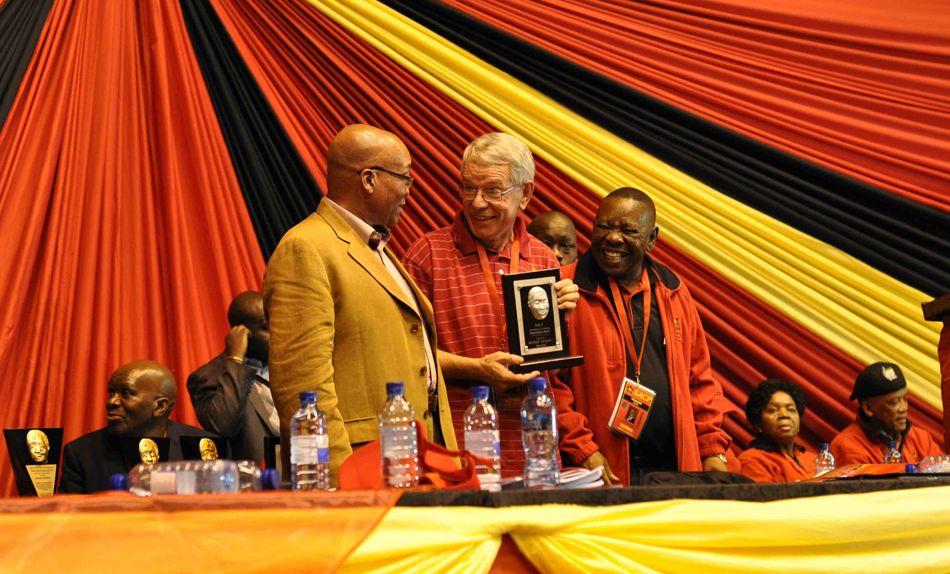
PRETORIA, South Africa—It’s been a surreal time in South Africa, where during February events went into overdrive after a period of political torpor heading for seemingly permanent logjam. The recall in mid-February of President Zuma by his party, the African National Congress (ANC), followed by his resignation as head of state and the speedy inauguration of Cyril Ramaphosa as the country’s head of state, ended a long run of national embarrassment, anger, and utter confusion.
Zuma initially resisted the termination of his deployment by the ANC as state president. But faced with the prospect of a vote of no confidence in the National Assembly, which would have seen the ANC and opposition parties join forces against him, he rancorously announced his resignation on national TV.
Zuma headed the ANC since 2007 until the end of his term last year. He was state president for nine years, and completed almost two terms—from 2009 until 2014, when he led the ANC to victory at the polls with a dented majority, and from then until his downfall this year.
By the end of his presidency his erstwhile allies on the left, the Congress of South African Trade Unions (Cosatu) and the South African Communist Party (SACP)—two branches of a long-standing alliance led by the ANC—had been repeatedly calling for him to step down. They had become some of the most vocal opponents of the corruption and cronyism that had become hardwired into the state under Zuma.
He had been heaped with charges of corruption of various sorts, and worse, way before he became state president, and yet Cosatu and the SACP built a good deal of the support he needed to become leader of the ANC and head of state. Their experience mirrors the fortunes of their large working-class base, which experienced initial gains in the Zuma era but were ultimately let down and frustrated.
Some personal history
In 2005, Zuma was sacked as deputy president by then-president Thabo Mbeki after the former’s financial advisor was convicted for soliciting a bribe for him. The same year he stood trial for raping the daughter of a friend. His accuser, known at the time as Kwezi, was subject to hostile and sexist cross-examination in court about her personal history. Out of court the affair took on a fiercely misogynistic mood. Zuma was acquitted. Kwezi was hounded and was forced to flee the country together with her mother, whose home had been torched.
In 2006, Zuma had 18 charges of corruption and racketeering against him dropped due to incompetent preparation by the prosecution. Despite the controversy, he was elected president of the ANC in 2007 after defeating Mbeki in a bitter contest at the party’s national conference in Polokwane. The ANC’s strong majority support in the country meant that Zuma was on course to succeeding Mbeki as president of the country.
He was again slapped with corruption charges following the Polokwane conference, related to an arms deal involving several countries. But the charges were ruled unlawful and referred to by the presiding judge as political meddling in which Mbeki was complicit. The ruling led to Mbeki’s recall in September 2008, which at the time the ANC presented as a way to heal divisions inside the party.
Transitioning from Mbeki to Zuma
The SACP and Cosatu considered Zuma as a man of the left. They saw in him a chance to set South Africa’s post-apartheid transition on a more progressive course than Mbeki’s. They were unhappy about macro economic policy, argued that it was neoliberal, part of a “class project” started in 1996 that rejected progressive change, and of scant benefit to the majority of South Africa’s population (48 million then, now 56 million), the working class and poor. At party congresses delegates would raise the roof singing “Zuma awerthu! (Zuma is ours!).”
Mbeki’s macro economic policy was shaped in part by force of circumstance due to the lack of the much hoped-for foreign direct investment that followed the democratic breakthrough of 1994. The goodwill shown toward South Africa by nearly the entire outside world didn’t translate into tangible support needed in part to implement the Reconstruction and Development Program (RDP). The RDP was to be the main policy spearhead for tackling social-economic inequality and underdevelopment.
Mbeki’s 1996 Growth, Employment and Redistribution (Gear) strategy referenced the ideal of the RDP but in practice was shackled to and by the neoliberal policy norms then being entrenched globally: cutting fiscal deficits, combatting inflation, exchange rate stability, deregulation for trade and capital flow liberalization, and an appetite for privatization.
The most glaring immediate sign of the need for a change of direction in the 2000s, and on which Cosatu and the SACP were on the same page as the rest of civil society, was the issue of HIV-AIDS treatment. Mbeki mistrusted the intentions of Big Pharma’s marketing of anti-retrovirals (ARV) in developing countries and staunchly opposed their rollout in South Africa. His health minister instead urged people to eat beetroot, lemon and garlic to slow the progress of HIV in the body, and she upheld the president’s refusal to make ARVs fully available. The scandal wasn’t explicitly linked to Mbeki’s recall but it loomed large over it.
Most of the print media was toxically hostile to Zuma and the ANC-led alliance. The Cold War-style subtext of much press coverage of the time was the red threat—a new rooi gevaar in the Afrikaans language—posed by the left’s policies that would stifle growth, foreign investment, and the private sector. The newspapers of the time are pure gold to any student of red-peril media iconology.
Zuma’s run-ins with the courts and the seemingly incessant attempts to nail him with litigation smacked of conspiracy to many in the alliance. A Cosatu press release of December 2007 summed up the mood: “It is clear that Jacob Zuma’s human rights, including the right to a speedy and fair trial, have been systematically and grossly violated. We recall that he has been a subject of investigation since 2000. Justice that has been delayed is justice denied!”
Cosatu and the SACP were keen to see the National Democratic Revolution (NDR)—the conceptual progressive transformation agenda of South Africa since its transition to democracy—take a leap forward. The alliance, they felt, had been sidelined, and the ANC’s power as a broad, grassroots movement had been replaced by narrow executive government.
Zuma in power
The current echo chamber of media punditry that frames so much of public debate in South Africa now presents the Zuma years as an unmitigated disaster from start to finish, “a long national nightmare,” as one political commentator put it. Historical amnesia has kicked in and the inconvenient details of the past needed to understand the present have been largely airbrushed away.
For Cosatu and the SACP, the early Zuma years comprising much of his first term were a time when government clocked up gains in realizing the agenda of a forward-looking developmental state (as opposed to a welfarist state). At the ANC conference in Polokwane that elected Zuma in 2007, the SACP succeeded in getting five priorities adopted for subsequent government policy: decent work, health, land, rural development, and crime fighting.
Between 2009 and 2016 nearly a trillion rand was put into developing infrastructure, part of a four trillion rand investment that would run for the next 15 years. This helped cushion the impact on South Africa of the global financial crisis that began in 2007.
Far greater numbers of children from poor families received financial aid for vocational and university study. Work started on creating the country’s first national health insurance (NHI) scheme to break down the inequalities resulting from the current system. This comprises lavish private healthcare that benefits the mainly white rich and the heavily overburdened and substandard healthcare at public facilities on which the black majority depends. NHI is now ready in draft legislative form and ready for parliament to take it forward.
The Zuma government was also largely responsible for turning the tide in the battle against HIV-AIDS. In 2008, some 680,000 people were receiving ARV treatment, thanks to a court ruling four years earlier that forced the government’s hand. Life expectancy rose from 53.4 years in 2004 to 62.5 in 2015, by which time over 3 million people were on ARVs and South Africa had the world’s largest program of ARV therapy. One estimate is that 330,000 people died prematurely due to AIDS between 2000 and 2005, and that 35,000 babies were born with HIV infections that could have been prevented.
Much of the of legislation passed in the early Zuma period was influenced by the presence in government of communists and trade unionists, who were deployed in far bigger numbers in all branches of government, from local to national. This didn’t mean that all policy was progressive. There were serious conflicts between labor unions and government on many issues, and the state as a whole was, and remains, a highly “contested terrain,” as the ANC’s alliance partners are inclined to put it.
A shadow state emerges
What the alliance partners of the ANC were less savvy about was that from early on Zuma was central to the emergence of a shadow state—a sort of deep state centered on wealth accumulation. Here key decisions on ministerial deployments, procurements by state-owned enterprises and the makeup of their boards of directors, the running of the public broadcaster, the corporate control of pay-TV, and many other fundamental areas were being taken by people well outside government. Rogue intelligence units and operations were set up to try to dig up dirt on people to manipulate them or to bring down reputable officials in state institutions who wouldn’t play ball.
Other more usual aspects of corruption, often involving tendering processes and deals between private companies and government at different levels, in part morphed into a state of corporate capture, which further grew into a much larger monster. It was described by the media simply as “state capture,” a term originally coined to describe the takeover of former Soviet Bloc countries by corporate or financial oligarchs. It’s now an indelible part of the South African lexicon.
The key figures in the media spotlight were members of the Gupta family, a corporate dynasty from India. Three Gupta brothers had come to South Africa to set up shop in the 1990s. Their relationship with Zuma dates to about 2003.
In 2013, South Africans were weirded out by the spectacle of 200 Gupta wedding guests from India landing at a national air force base in Pretoria in splendid attire—en route to festivities that it has now emerged were paid for by the Free State provincial government—and being treated like heads of state. This stuck out as the most visible sign of state capture. Zuma resorted to plausible deniability over the incident, but there were plenty of other signs of the president and his family’s unhealthy and lucrative relationship with the Guptas.
Zuma’s home affairs minister granted the brothers quick and easy citizenship in 2016. The same year ANC MPs and leading members of the party started coming forward with accounts of the Guptas offering them ministerial jobs in return for favors. One such offer concerned a former ANC MP who was offered the public enterprises ministry by the Guptas as far back as 2012, in return for which she was to cancel the South African Airways route to India so that a Gupta air company could occupy the gap.
But it was in 2015 that people started getting suspicious about the motives underlying ministerial appointments when Zuma fired his finance minister Nhlanhla Nene. This occurred after he had been just a short time in the job, and it caused losses on the financial markets (and was possibly engineered for lucrative currency speculation). Zuma replaced Nene with a relatively unknown figure, David Van Rooyen, who in the wake of public and political anger at the move was rapidly swapped for Nene’s predecessor Pravin Gordan, a trusted figure and no buddy of Zuma’s. It later turned out that Van Rooyen was close to the Guptas and was at their home the day before Zuma made him finance minister. Earlier, the Guptas had offered the deputy finance minister 600 million rand to take over the ministry from Nhlanhla Nene in return for working for the brothers.
Resistance to corruption starts growing
Details of the Guptas’ tentacular reach into top appointments in South Africa’s government ministries and state-owned businesses were contained in the October 2016 report on state capture by the then-Public Protector Thuli Madonsela. Zuma and others implicated in the report went to court to try to block its release but were forced to back off by the High Court. The report proposed that an inquiry into state capture be conducted by a team nominated by a judge and not, as most high-level inquiries were, by the president. Zuma balked at the idea and refused to act on this and the report’s other recommendations.
Another scandal that had uncoiled slowly since Zuma took the presidency in 2009 concerned public spending on security upgrades to his rural homestead near Nkandla in KwaZulu-Natal. The upgrades included non-security structures, such as a swimming pool, creatively named a “fire pool.” At first the government denied any knowledge of spending on the upgrades. In parliament Zuma said that no state money had been used to build a house for him, though this had not been the issue, and maintained he had done nothing wrong.
In 2014, the Public Protector issued a report on the matter that found that the president should pay back some of the money spent by the state on the upgrades to his homestead. Zuma sat on his hands and in the National Assembly chuckled unrelentingly, much to the stupefaction of the opposition. MPs representing the populist Economic Freedom Fighters (founded by Julius Malema, the former head of the ANC Youth League and one-time Zuma devotee who had lost favor with the president) chanted, “Pay back the money” whenever Zuma made an appearance. They were routinely dragged out of the chamber for their trouble.
Zuma’s supporters initially derided the report, and nothing was done in the National Assembly to get him to comply with it. But in 2016 the Constitutional Court ruled that Zuma had to abide by the Public Protector’s recommendations and that he and the National Assembly had breached the Constitution by ignoring them.
By then the tide had turned and the SACP, Cosatu and a good many ANC leaders, including most vocally ANC stalwarts and veterans of the liberation struggle and the uMkhonto we Sizwe Military Veterans Association, saw that Zuma and the ANC under him were rapidly becoming more of a liability than an asset. There were repeated calls for Zuma to resign, to which the SACP and Cosatu added their voices in March 2017. They also joined with a mix of civil society organizations, such as Save South Africa, in protesting the moral decay and concomitant social and economic crises afflicting South Africa—what the South African Council of Churches called the country’s development into a “mafia state.” The SACP regretted its previous involvement in the ANC’s “palace politics,” and Solly Mapaila, the party’s first deputy general secretary, publicly apologized to South Africans for the party’s earlier support for Zuma.
The SACP had been one of the first to take the issue of state capture seriously and to call for an inquiry into what was going on. Unlike most of the political opposition and media, the party focused on the corporate, rather than personality-driven, nature of this shadow state. It drew attention to the involvement of a spectrum of corporate entities and interests, some of the biggest of which were rooted in the domain of Afrikaner capital accumulation nurtured under apartheid. State capture was hardly limited to the Guptas, though the media had made them and Zuma practically its only protagonists.
Owing to their general bumptiousness the Guptas tended to be the most grotesquely conspicuous of the state captors. Like when they hired the UK dark arts PR firm Bell Pottinger at over 1.5 million rand a month to counter their bad press. The company portrayed the brothers and their operations, and all who were buoyed along by them, as champions in the fight against “white minority capital.” The phrase had a certain traction in South Africa because, obviously enough, white capital had been the lynchpin of colonial and apartheid hegemony, and its influence persists.
But the PR firm—which soon found that it had a PR problem all of its own—used the campaign tagline cynically, exacerbating tensions within an already strained social fabric. It generated spinoffs that led to journalists being targeted for exposing Gupta-Zuma (dubbed “Zupta”) vice, including most ruinously and murderously at the public broadcaster. The SACP stressed that the real target of struggle in post-liberation South Africa should be all monopoly capital over and above its very real racialized characteristics. Exposed and disgraced among its PR peers, Bell Pottinger went down in flames. But planet Zupta spun on.
Elections matter
The ANC had done comparatively badly in local elections in 2016, losing control of several urban hubs to the conservative Democratic Alliance. Translated into votes, public annoyance with the governing party showed that there was now nothing self-evident about its chances of retaining power in the next national elections in 2019. The party’s dysfunction hinged a lot on its inability to deliver on its campaign promises and to rid itself of the factionally driven patronage networks that were diffused across its structures right down to the branch level. The demands for progressive policies started to be heard more from the grassroots, such as the #FeesMustFall protest movement which developed from opposition to increases in tertiary tuition fees into an all-out call for free higher education.
Throughout 2017 the big focus was on the ANC’s elective conference set for the end of the year. The run-up to it revealed in granular detail the intensity of factional conflict within the party. In KwaZulu-Natal alone there were 35 political assassinations between April 2016, just before local government elections, and April 2017, and there were more in the months to come.
At the conference, the elections to the top six positions of the ANC resulted in an even split between officials who supported Zuma’s choice of candidate to succeed him and were generally perceived to be close to the president, and those who supported the election of Cyril Ramaphosa. His main opponent was Nkosazana Dlamini-Zuma, former home affairs minister under Zuma before becoming chair of the African Union Commission. Zuma’s ex-wife, she was his preferred candidate and had the support of the pro-Zuma faction in the ANC.
When Ramaphosa won the leadership contest, becoming the 14th president of the ANC, it was clear that it was only a matter of time before he would replace Zuma and become the country’s fifth state president. Ramaphosa has both liberation struggle and big business credentials: The former for his role as a mineworkers’ leader, anti-apartheid activist and negotiator to end white rule; the latter for later business-empire building that has given him an estimated net worth of 6.4 billion rand.
Zuma’s much anticipated recall by his party took time. The pro-Zuma base in the party’s executive committee delayed the process, and when it was eventually agreed, days passed in which it was uncertain quite what was going on. But as a no-confidence vote loomed in parliament, with the prospect that Zuma would be unceremoniously given the boot, he relented and opted instead for resentment-tinged resignation.
Accountability
Though much about the state capture issue has a strongly systemic dimension, still the influence of personality on the whole sorry story must be taken into account. Zuma’s particular brand style is evasiveness and circumvention. His constant denials of wrongdoing and failure to own up and take responsibility for his actions had a trickle-down effect down the years among his acolytes and appointees. Lack of accountability has become pervasive among officialdom.
This was evident in the evasions of the police minister following the Marikana massacre of August 2012. And more recently it was distressingly conspicuous in the buck-passing by top health officials in Gauteng province. This followed the transfer in 2016 of mental health patients out of government institutions to unregistered facilities, where they were so mistreated, starved and dehydrated and denied medication that over 140 of them died. At the resulting inquiry that ended this February the officials who had decided on the removal of the patients fell over one another in denying they had known anything was amiss.
In its response to the news of Zuma’s resignation, the SACP wrote: “The principal victims of the state capture agenda in which President Zuma has been central and has had a particularly devastating impact on are the working class and the rural and urban poor…. Never again must we allow an individual, whatever their struggle credentials, to stand above organizational discipline, collective leadership and the democratic rule of law.”
Cosatu called on the new president, Cyril Ramaphosa, to fight corruption and to “prioritize a Job Summit that will help us deal with the scourge of unemployment. The new government leadership needs to work to resolve South Africa’s structural unemployment through deliberate planning and imaginative policy formulation.”
Tough questions hang over the alliance partners’—the SACP and Cosatu—relationship with Zuma and apparent reluctance until the eleventh hour to call for him to resign. They were so used to rightwing attacks on the Zuma government in its early days that, as the leader of the SACP Blade Nzimande explained recently, they tended to close ranks in response to mounting criticism of Zuma, at least initially.
This criticism, coupled with such things as the fallout from the Marikana massacre and Zuma’s handling of the Nkandla debacle, put the alliance under pressure—meaning in reality that it barely functioned—and compounded splits in the labor movement. Numsa, the National Union of Metal Workers of South Africa, the largest affiliate of Cosatu, was expelled from the confederation in 2014, prior to which it had parted ways with the SACP, contending that the party had lost its Marxist-Leninist direction.
Cosatu’s General Secretary Zwelinzima Vavi was expelled the next year. Vavi now heads the South African Federation of Trade Unions (Saftu), launched in 2017, which has 24 union affiliates, including Numsa. The events, individual behavioral details, and contested explanations surrounding all this are intricate and expansive. In general, bird’s-eye-view terms, though, we saw a large labor movement sorely divided over what was the best way to pursue the National Democratic Revolution—whether with the ANC and Zuma (or with the ANC despite Zuma) or through a purely left-militant arrangement.
The NDR itself has had a rough ride. The term “revolution” seemed squarely at odds with the state of things by the end of the first Zuma administration, after which the ANC did worse at the national and local government polls. “La révolution est glacée” (the revolution is frozen) was how the young French revolutionary Saint-Just described the paralysis confronting the revolution in France in 1794. The phrase resonates. In 2016, the SACP journal African Communist carried a lengthy analysis of the crisis facing the NDR and the need to revitalize it. Popular enthusiasm and engagement for the NDR at community level would seem the best way to unfreeze the revolution.
Moving forward
Was the pact with Zuma that allowed him to lead the ANC and therefore the country worth it, given the toll it has exacted on the country? Should the warnings about Zuma’s tricky behavior and unreliability, voiced by among others Ronnie Kasrils, the veteran Umkhonto-we Sizwe leader and intelligence minister under Mbeki, have been heeded? Of course, no one then knew what would happen under Zuma’s presidency. Retrospective criticism is easy, though that doesn’t mean it’s futile. The point now, as the SACP and Cosatu see it, is to push on with getting rid of the mess of state capture and the paralysis it has generated throughout government. With the “Z factor” gone, more or less, there also seems to be some potential scope for more united positions within the labor movement.
There’s a honeymoon period with President Ramaphosa, though factional tensions in the ANC remain unquelled. There are high expectations that he and his team will clean things up, beginning with the removal of compromised top officials in government and in key institutions, such as the National Prosecuting Authority. The Guptas and their partner, Zuma’s son, have fled for the hills, pursued by the police special crime-fighting unit. Any day now, Zuma may find that charges against him are reinstated.
The country is lumped with a fiscal deficit of some 50 billion rand. Half of that is reckoned to be the result of the parasitic plunder of public resources that visibly accelerated over the last couple of years. The state budget, presented less than a week after the inauguration of President Ramaphosa, announced the first hike in the value added tax (VAT) since South Africa became a democracy. It’s a move that will hit the poor the hardest, stressed the SACP and Cosatu. And it bears out the claim that it’s South Africa’s working class and poor who will pay the price for the runaway looting and ruin of the Zuma years.



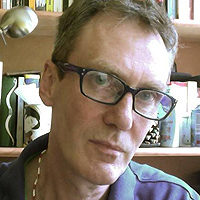
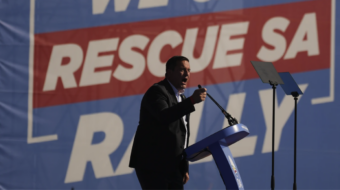
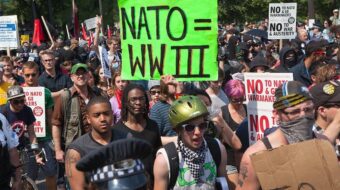
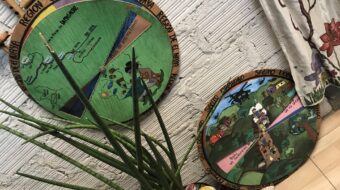





Comments